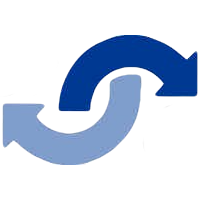Many organizations have new hires beginning in the new year – a fresh start after the busyness of the holidays and a great time to onboard a new team!
How can you ensure that you build an effective onboarding program?
The first thing we suggest is reaching out to our team because we believe every company and employee deserves a customized program.
If you are looking for a more high-level review of what is needed, keep reading.
An effective onboarding program can help new employees feel welcomed, supported, and prepared to succeed in their new roles.
Here are some steps you can take to build an effective onboarding program:
Plan ahead
Start planning your onboarding program as soon as you make a job offer. Consider the needs and expectations of your new hire, as well as the specific tasks and responsibilities they will have in their new role.
Orient new hires to the company and its culture
Provide new hires with information about the company’s mission, values, policies, and procedures. This could include a tour of the office, introductions to team members, and a review of company policies and procedures.

Set expectations
Clearly communicate the expectations and goals for the new hire’s role, as well as the resources and support available to help them succeed. This could include setting specific goals or objectives for the first few weeks or months on the job.
Provide training and support
Offer training and support to help new hires learn their job duties and develop the skills and knowledge they need to be successful. This could include in-person training, online resources, or mentorship from experienced team members.
Foster connections and encourage participation
Help new hires feel connected to the team and the company by introducing them to colleagues and encouraging them to participate in team events and activities.

Regularly check in and provide feedback
Regular check-ins and feedback can help new hires feel supported and understand how they are doing in their new roles. Consider setting up regular meetings or check-ins with new hires and their managers to discuss progress and address any concerns.
It takes time to learn how to effectively onboard (the onboarder must first be onboarded). An onboarding checklist is a useful tool for ensuring that new hires have a smooth transition into their new roles.
Here are some steps you can follow to create an effective onboarding checklist:
- Identify the key tasks and activities that need to be completed during the onboarding process. This could include tasks such as setting up a workstation, completing paperwork, receiving training, and learning about company policies and procedures.
- Determine who is responsible for each task or activity. This could include the new hire, their manager, HR, or other team members.
- Prioritize the tasks and activities on the checklist. Some tasks, such as completing paperwork, may need to be completed before others, while others may be able to be done in any order.
- Determine how each task or activity will be completed. This could include providing instructions, assigning a mentor or point person, or providing access to resources or training materials.
- Consider including deadlines or due dates for each task or activity on the checklist. This will help ensure that everything is completed in a timely manner.
- Review and update the onboarding checklist regularly. As your company grows and changes, you may need to add or remove tasks from the checklist. It’s important to keep the onboarding process current and relevant.
- Communicate the onboarding checklist to new hires and relevant team members. Make sure everyone has a clear understanding of what needs to be done and by when.
Interested in how we can build one out specifically for your team?
Our HR consulting team is ready to support!


